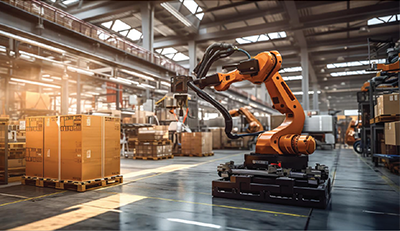 Over the past decade, the international trade landscape has undergone substantial changes driven by natural disasters, health pandemics, geopolitical tensions, economic shifts, and technological advancements. Despite these challenges, the logistics industry has demonstrated remarkable growth and resilience, with its valuation rising from $5.8 trillion in 2018 to $10.41 trillion by 2023, and projections suggest it could surpass $18 trillion by 2030. However, the latest report from the United Nations Conference on Trade and Development (UNCTAD) underscores persistent challenges, including geopolitical tensions, rising shipping costs, and high debt levels, which could affect global trade.
Over the past decade, the international trade landscape has undergone substantial changes driven by natural disasters, health pandemics, geopolitical tensions, economic shifts, and technological advancements. Despite these challenges, the logistics industry has demonstrated remarkable growth and resilience, with its valuation rising from $5.8 trillion in 2018 to $10.41 trillion by 2023, and projections suggest it could surpass $18 trillion by 2030. However, the latest report from the United Nations Conference on Trade and Development (UNCTAD) underscores persistent challenges, including geopolitical tensions, rising shipping costs, and high debt levels, which could affect global trade.
Key Factors Shaping And Designing The Future Of The Logistics Industry
1. AI and E-commerce Explosion
The integration of Artificial Intelligence (AI) in e-commerce has revolutionized the logistics industry by optimizing supply chains, enhancing delivery accuracy, and improving customer service. AI-driven systems can predict demand, manage inventories more efficiently, and automate processes such as order picking and route planning. This is particularly critical as e-commerce continues to grow, driven by changing consumer behaviours and increased online shopping. AI not only helps in meeting these demands but also in providing personalized services, like recommending delivery times or locations based on customer preferences.
2. Sustainability
As global awareness of climate change and environmental issues grows, the logistics industry is under increasing pressure to adopt more sustainable practices. This includes the development of zero-carbon shipping solutions, the use of alternative fuels like hydrogen or electricity, and the implementation of more efficient routing to reduce fuel consumption. Companies are also exploring ways to minimize waste in packaging and improve recycling efforts. Sustainability in logistics isn’t just about compliance with regulations; it’s becoming a competitive advantage as consumers and businesses alike prefer to partner with environmentally responsible companies. However, the transition to greener practices can be costly and requires significant investment in new technologies and infrastructure.
 3. Bridging the Talent Gap
3. Bridging the Talent Gap
The logistics industry faces a significant challenge in attracting and retaining skilled labour, particularly as the sector becomes more technologically advanced. The industry’s talent gap is driven by several factors, including an aging workforce, the rapid pace of technological change, and a mismatch between the skills required and those available in the labour market. To bridge this gap, companies are investing in training and development programs, partnering with educational institutions, and offering more competitive wages and benefits. Moreover, there’s a growing emphasis on attracting younger workers by showcasing the innovative and dynamic nature of modern logistics. Automation and robotics are also playing a role in alleviating some of the labour shortages, but human oversight and expertise remain crucial.

4. Technological Advancements
Technological innovation is at the heart of the logistics industry’s transformation. Beyond AI, other technologies such as blockchain, Internet of Things (IoT), and robotics are reshaping how goods are transported and tracked. Blockchain, for example, offers enhanced transparency and security in supply chain transactions, reducing the risk of fraud and errors. IoT devices provide real-time data on the condition and location of shipments, allowing for better decision-making and more responsive customer service. Robotics and automation are streamlining warehouse operations, improving efficiency, and reducing costs. These advancements are not only improving operational efficiencies but also driving a better customer experience through faster and more reliable deliveries.
 5. Global Trade Dynamics
5. Global Trade Dynamics
The logistics sector is deeply intertwined with global trade, which has been increasingly affected by geopolitical tensions, trade wars, and economic shifts. Events such as Brexit, the US-China trade war, and Russia’s invasion of Ukraine have disrupted global supply chains, leading to increased costs and uncertainties. The rise in protectionist policies and tariffs has also complicated international trade, forcing companies to rethink their supply chain strategies and consider reshoring or nearshoring their operations. Moreover, the COVID-19 pandemic exposed vulnerabilities in global supply chains, leading to a re-evaluation of risk management practices. Logistics companies must navigate these complex dynamics while maintaining efficiency and cost-effectiveness.
 Conclusion: Balancing Growth and Challenges
Conclusion: Balancing Growth and Challenges
The logistics sector is at a pivotal moment, with promising growth prospects tempered by significant challenges. The industry’s valuation has surged over the past five years and is expected to continue an upward trajectory, reaching over $18 trillion by 2030. However, to sustain this growth, the sector must address the ongoing challenges of geopolitical tensions, rising costs, and the need for technological and workforce advancements. Companies that successfully balance these factors, leveraging the latest technologies while adopting sustainable practices and cultivating talent, will be well-positioned to thrive in this evolving landscape.